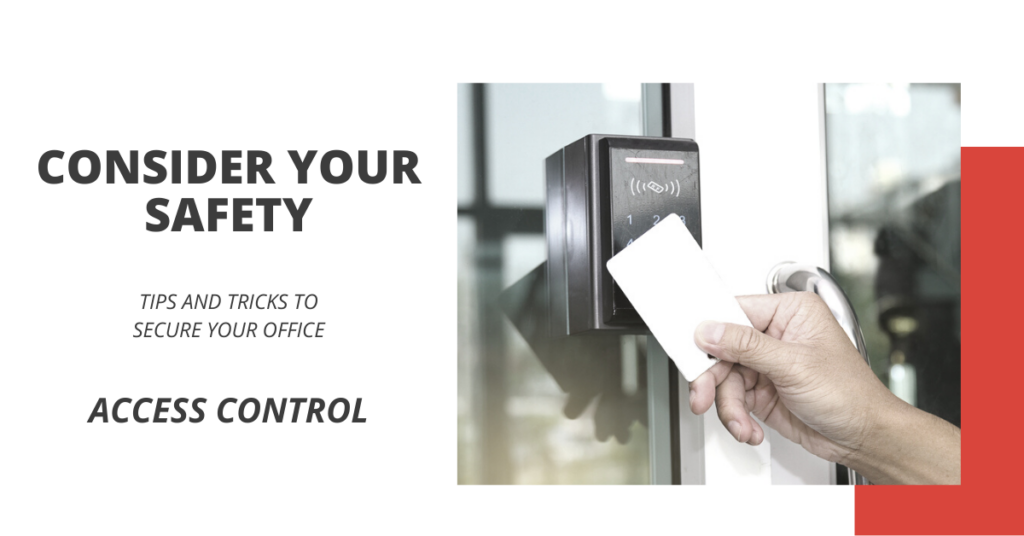In this week’s Tips and Tricks segment we cover access control – what is it, how does it work, and what areas of your business are most important to protect.
WHAT IS ACCESS CONTROL?
When we refer to access control, we mean the system that guarantees security, convenience, real-time updates and cloud-based integration at various entry points in your facility. The physical hardware that we install combined with software applications for end users and managers enable an advanced approach to credential management. There are a variety of companies that produce door access systems for different purposes – commercial, residential and everything in between. At DRP Solutions, we partner with VICON and ProDataKey for Access Control projects.
HOW DOES IT WORK?
We prefer cloud-based access control systems. By connecting to the internet, cloud access control allows effortless management for a better experience and improved productivity. The software that comes with your system allows you to know the status of every door in your facility as well as lock or unlock them from any mobile device. To actually gain access to a specific door, an employee can use a key card for swipe-based entry or their cell phone for hassle-free Bluetooth-controlled entry. There are also keypad readers and keyfob credentials which can be used indoors and outdoors. Access control setups entail identification of who is allowed to access secured information and areas, authentication of the individual, and actual access to the resources.
TYPES OF ACCESS CONTROL
There are several methods to consider when deploying access control.
- Discretionary access control: the owner or administrator of the protected area sets the policies for who is allowed access.
- Mandatory access control: this model is nondiscretionary, so people are granted access based on an information clearance. The central authority regulates access based on different security levels; this is most common in government and military environments.
- Role-based access control: in this model, access is granted based on the business functions rather than the individual him or herself. Access is therefore only granted based upon what is deemed necessary for the person’s role in the organization.
- Attribute-based access control: in this method, a set of attributes, such as time of day and location, is used to determine which users have access to which locations.
WHY IS ACCESS CONTROL IMPORTANT?
Access control allows you to limit access to the most protected assets within your company – your people, your data, your confidential records and your building itself. When you implement an access control system, you mitigate the risk of information being accessed without the appropriate authorization. These types of technologies allow you to manage the flow of people in and out of the office, as well as restrict access to certain areas of the business.
BENEFITS OF ACCESS CONTROL
When done properly, your access control system allows you to enjoy the following benefits:
- Peace of mind that your data is safe
- Management of staff access to your facilities, especially when they leave or change roles
- Access is centrally managed
- Deterrence against misuse of property and data
- Protection from intruders
PRIME LOCATIONS FOR ACCESS CONTROL
There are various entry points in your facility that should be secured with access control, including:
- All exterior doors
- HR
- Accounting
- Electrical and IT closets
- Warehouse and inventory areas
Like what you see? CLICK HERE to join our Tips and Tricks of the Week email list!

